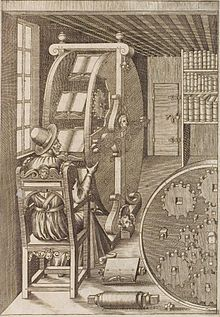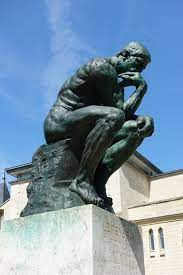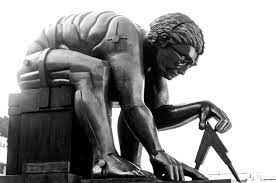Font Size and Behavior
Hi Zettlers,
I recently reduced the font size in The Archive because I needed to windows next to each other to assemble a Q&A (on selfdevelopment). Normally, I use pretty big letters (Menlo, 24pt). Now I am down to 18pt. I experienced a shift in my preference on how to structure my big notes. I use way more subtitles. I lean more towards a less formal outline and mix more elements together (TOC-like modules with comments and more).
What is your reasoning behind the font size of your Zettelkasten software?
Live long and prosper
Sascha
I am a Zettler
Howdy, Stranger!

Comments
Hmm ... FWIW, I decrease font size in my programming apps when I'm using the smaller screen of my MacBook so I can get a better overview of things. Getting lost in the thick of only 1 function per page on screen, but with large letters, often doesn't help. I notice this pretty quickly because when I fit 2 windows side by side, long lines wrap really hard and that gets annoying.
For composing text in Emacs, I usually increase the font size twice; each applies a scale of 1.2x, so I get from 18 to ~26pt. (Same for proof-reading, most of the time.)
In The Archive I hover around 20--22pt, with the larger font on big display. Similar reasoning like when I'm programming. I sometimes just notice when I write that apparently nothing fits on screen to re-read what I just typed, and then I decrease the font. But 18pt makes me sad Have to try that out.
Have to try that out.
That proposes an interesting challenge to optimize fonts.
The Information Architects, Inc. made a good point back in the day with their responsive font sizes: Show the window in full screen, that's composer mode with large letters at about arm's length away. On handheld devices, you can use smaller fonts because the devices are closer. (Imagine taking a photo of the scene from your eye's view, which creates a 2D image, then measure the text on the picture with a ruler; it's supposed to be pretty close.) When you shrink the window, the font gets smaller, taking you from distraction-free focus mode to a mode that's better for editing, where you need overview to compare stuff, etc.
A problem of prescribing foxed font sizes is the difference in hardware. The factor there is pixels per inch (PPI). Full-HD/1080p resolution on a 24" monitor vs a 20" monitor renders 18pt text at different 'physical' size, i.e. the height you can measure with a ruler held to your screen.
So I think any theory of optimal font size needs to factor in
ppiof the device (I don't know if that's information software can get from the OS, to be honest),If one is scientifically inclined, one also needs to measure this in a proper study. The mix of variables sounds odd to me, but maybe smart scientists could figure this out for the sake of work ergonomics.
Author at Zettelkasten.de • https://christiantietze.de/
Here are some miscellaneous ideas.
I use Ubuntu-Mono Regular 16.0 pt. and a 27" 1080p monitor attached to my MacBook Pro.
I have vision issues so I use the built-in Accessibility functions a lot. ⌘- to reduce the font size and ⇧⌘+ to increase font size. I move up and down frequently. Smaller when making screenshots for forum posts and bigger fonts when reading.
I struggled with the UID of zettel being prepended to the title. So much of the screen real-estate was take up by the UID I couldn't read the title in the enlarged font I needed to read the screen. Especially in the two window workflow mode using the laptop 13" monitor. I've partially solved this by moving the UID to be post-pended to the zettel file name. I say partially as this move has brought up a few other problems.
Line Height (1.6) is a setting I find very helpful in reading and writing but adjusting the line height is not available in all applications.
Great questions! I hadn't considered that my focus would flux around the information density of the material studied or read. But I now see the point. If I'm looking for information, and the textual density is high, and the information is compact it would take more focus to find and absorb the information sought. This points to the value of white space in a our documents/notes/zettel. Also, the automaticity of note-making chunks the information into bite-size portions as long as each note is linked heavily things are okay.
A quick look in my archive and I find a few relevant notes. I found so many "hits" I'm off to start a note thread on the cost/benifits of the density of information. Thanks @Sascha and @thomasteepe Here are some snippets from a few notes.
Ease the cognitive workload through various means. Focus here on the visual representation of the knowledge. Other Ways to ease the cognitive workload are:
1. scheduling in advance time to work
2. creating a distraction free environment
3. making deep work a habit
4. note taking
Mary Oliver’s Poetry Captures Our Relationship With Technology - The Atlantic
Will Simpson
My peak cognition is behind me. One day soon, I will read my last book, write my last note, eat my last meal, and kiss my sweetie for the last time.
My Internet Home — My Now Page
@thomasteepe's "Information capacity of a visible unit" questions rather a two window work flow helps or hinders idea assimilation?
With The Archive the fact of essentially 4 windows (2 note lists and 2 editor windows) clutters the visual field. This makes interaction with the idea of focus harder. Maybe only marginally but marginal distractions stand between 97% and 100% attention.
Does anyone know of about any research in this area? Ideas are not data but ideas can be supported and extracted from data. How does data density effect this? Can data density be abstracted to words on a page? This must have been studied long ago as books are nominally the same size. We don't have most of our books printed 12pt. on A1 or A2 paper. If it was easier to grasp ideas with text density of this amount you'd think we'd be there.
Will Simpson
My peak cognition is behind me. One day soon, I will read my last book, write my last note, eat my last meal, and kiss my sweetie for the last time.
My Internet Home — My Now Page
Ah, dang. I didn't publish my reply.
@thomasteepe
I am a Zettler
@Sascha
re: visibility of information
I think it's interesting to ask what kind and what amount of information is accessible with (almost) one glance - the text you are currently writing, one (or more) previous notes, reference material, perhaps a collection of thinking tools... Here, as with other "cognitive support systems", people seem to have experimented and worked with all sorts of variations over the centuries - "reductionist" approaches like Zen writing modes, with a deliberately narrow focus, and "integrationist" approaches that aim to supply broad access to various sources, like Integrated Development Environments.

(Note: The "bookwheel" seems to be a charming invention in this spirit - here's a picture from the wikipedia.)
Ah, ok. Did I understand you correcty if I'd say:
The information capacity of my iA Writer window is 2400 characters but the visibility of information is narrowed to one sentence by the focus mind. The total information capacity would be much higher if I'd use my screen. But it is reduced by choice by limiting the length of each line to 80 characters. There is a lot of empty and unused spaces left and right in the margins.
I am a Zettler
@Sascha:
In my initial comment I mentioned
Owing to this fuzziness, I am in no position to assess properly if your understanding is correct - dear me.
A distinction between a) a potential information capacity and b) the actual visible amount of information was not something I had in mind when writing the above comment, but it seems plausible.
Deliberately reducing the amount of visible information I'm currently interacting with is a practice I have almost no experience with. I like to exhaust the available canvas area to almost the last square millimetre. That's why I'm so obsessive about layouts, columns and boxes.
One reason for this "exhaustive mode" lies in some peculiar experiments with "writing for insights" - they rely heavily on layouts and on the availability of several places on the canvas where I can put ideas.
Here are some examples:
A second reason are experiences from my job, where I find it very helpful to have my entire notes from a long meeting in one large OneNote page with a column layout.
I think I need to simmer this issue a bit on my inner plates.
There seem to be similar aspects to the question: What belongs on my desk (or computer desktop)?
Christian, for example, insists on not having a clock shown. I insist on having a clock. To me, the clock is a tool that I use for forward thinking and planning. I work in short time-bound ballistic (no control during the fly) efforts. Christian, works more with just one gear and lets himself be suprised by the next appointment. (correct me, if I am wrong)
There are different modes that are both individual and normativ (quite often one should change oneself instead of adapting the tools to ones momentary needs).
I am thinking of some experiments that we could conduct as a community with different types of problems and tools for solutions. (But first the online course and the book, though..)
I have an older note that I started but never finished (the "qqq" is my general bookmark) (this is directly copied and pasted):
201907111142 Ü2 Problemlösung Methode HowTo Rezept
Problemlösung qqq
Begriffe
Hack
HowTo
Kalkül
Methode
Plan
Prinzip
Rezept
Strategie
System
Taktik
Technik
Trick
Verfahren
Vorgehensweise
Werkzeug
Dann gibt
Das könnten alles Begriffe sein, die das Ergebnis eines Denkens über Probleme sind.
I use this thinking-tool (perhaps we should indeed work on a community-driven toolbox..): I collect synonyms on an entity I don't understand as well as I want to. Then I filter, define, connect, create boundaries etc. After that, it is time to take a step back and look at the bigger picture. Then I distinguish the broader concepts from its constituents and their relationships. This helps me to focus on what is the actual phenomenon instead of falling into the prescriptive trap of concepts. (actual phenomena are observed patterns. In this case, my own meta-patterns that I observe on this field of words and what people actually do or what empirical science can observe (e.g. what the brain does during the behavior))
In psychology (in other sciences, too of course) a similar process would be a multivariate factor analysis.
I will apply this method to the issue of "Arbeitsoberfläche" (English: work surface) which gives me room to think more independent of concepts Zettelkasten, screens or desks. (First, simmer. Then analysis, then simmer again. Then I have something that I can present)
I am a Zettler
Asking how to design a work surface / a work environment and possibly "ZK work sessions" that work for oneself (like how to begin a session / how to organize the main part / how to wrap up a session) - all this seems very promising to me, and fairly complex.
I understand that there might be reasons for using markup language to store notes, but using markup language in the stage of idea creation appears to me as opting for a form of work that I find highly limiting and restrictive (and which I use myself fairly often, due to the comfort of staying in one medium).
So questions about optimal work environments could directly lead outside the immediate ZK framework and into the framework of integrating several different canvas types.
Oh, I use all mediums available to idea creation (which I use here as an umbrella term for both creation and molding/crafting/editing/alteration).
Examples of the last days on paper:
Using a direction-alteration to tweak definitions
The resulting tool is an improvement on my ability to describe exercises more acurately and actually seeing the exercise I want to employ for the workout.
Using completness tests to draw boundaries
The resulting tool helps me to design a base workout curriculum for healthy biomechanics, develops an improved self-assessement tool and provides a story why some combinations of movement sub-practices produce more health. (oh, and a tool to gauge the necessary health program for athletes)
I think (never did scientific testing, just party tricks; sort of can feel numbers in my mouth; some strange dream-like intuition for geometric forms etc.) I have something akin to syntesthesia (most of the time I short-cut the lengthy description and just say syntasthesia). So, I do something in my head that feels strange which I wouldn't describe as thinking but more as observing what I observe if I throw something in a melting pot. Then I sit for an hour or two and observe what happens and most of the time something something useful is the result.
But I personally, for example, don't mind the markup. Often I like it.
I am a Zettler
@Sascha:
 ... that was beautiful and insightful.
... that was beautiful and insightful.
Don't make me blush.
I am a Zettler
No need for modesty. Your comments are sharp, smart, and they strike a chord with me. I can only aspire to be so clear in working with my knowledge project.
Will Simpson
My peak cognition is behind me. One day soon, I will read my last book, write my last note, eat my last meal, and kiss my sweetie for the last time.
My Internet Home — My Now Page
This forum thread outlines how I try to work creatively in a "ZK work session".
Two papers I recently processed on this topic are:
During the initial phase of onboarding notes, I don't care about any formating. I just let the text flow, making down any attempts at steering my attention. Sometimes even emulating ee cummings and forgetting to punctuate. Markdown editors stay out of the creative process till I call on them in phase two or three after the creative fire dwindles.
I favor Markdown editors for writing and insist that a clock be present when working on a screen.
My favored canvas type is de-cluttered, non-distracting, and minimalist.
Will Simpson
My peak cognition is behind me. One day soon, I will read my last book, write my last note, eat my last meal, and kiss my sweetie for the last time.
My Internet Home — My Now Page
The mathematician Henri Poincaré, in 1904, refers to this phase of creativity in his paper "An Essay on Mathematical Creation" as the time for letting the unconscious work on the problem. He provides some convincing examples but doesn't quite come out and say explicitly that he "sort of can feel the numbers in his mouth." Adding an hour or two or even a bit more time, like overnight, can surface the answer to a problem.
Source
Will Simpson
My peak cognition is behind me. One day soon, I will read my last book, write my last note, eat my last meal, and kiss my sweetie for the last time.
My Internet Home — My Now Page
@Will - thank you so much for linking to the brainpickings article.
It mentions the following:
This resonated with me.
Next, the article mentions
I suspect that for every famous story about some a-ha moment under the shower or while shaving or while waking up, you could find two other less well famous stories where people have relevant insights while sitting at their desk working - while unconscious processes may still play a crucial role.
One final remark.


Rodin's model was a pugilist and not a philosopher in the narrow sense. To represent the quintessential thinker without any mind extensions seems a bit misleading.
Here is a better option:
(Source)
Young's description of the mental processes "for a productive creative process" resonated with me too. The drivers for this process are, more than anything, slowing down and focusing attention on the material and relationships.
@Sascha said something very similar, and this too resonates.
Tools for thought can support 'digestion of material' and, @thomasteepe, your 4 x 4 mind map solution looks well developed for this.
My so-called tool for thought is less well-formed, more nebulous, fuzzier, and difficult to vocalize. This I see as my own failing. I don't have the vocabulary sufficient to clarify. These two authors do a much better job. My contribution, "The Two Window Workflow" is not as refined as yours and is digitally based, not tactile.
I love your reference to the "octopussian quality" of your process. I've added this phrase to my note
Metaphors for Tools for Thought.Will Simpson
My peak cognition is behind me. One day soon, I will read my last book, write my last note, eat my last meal, and kiss my sweetie for the last time.
My Internet Home — My Now Page